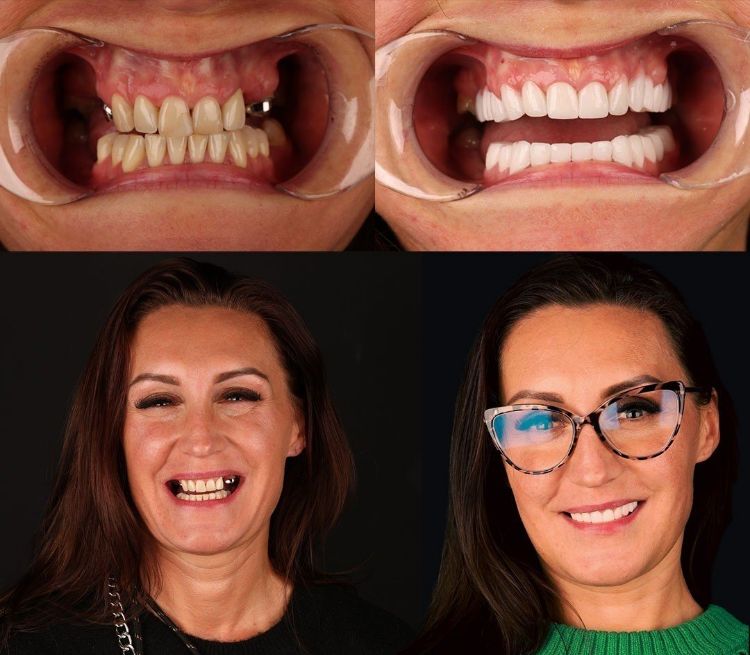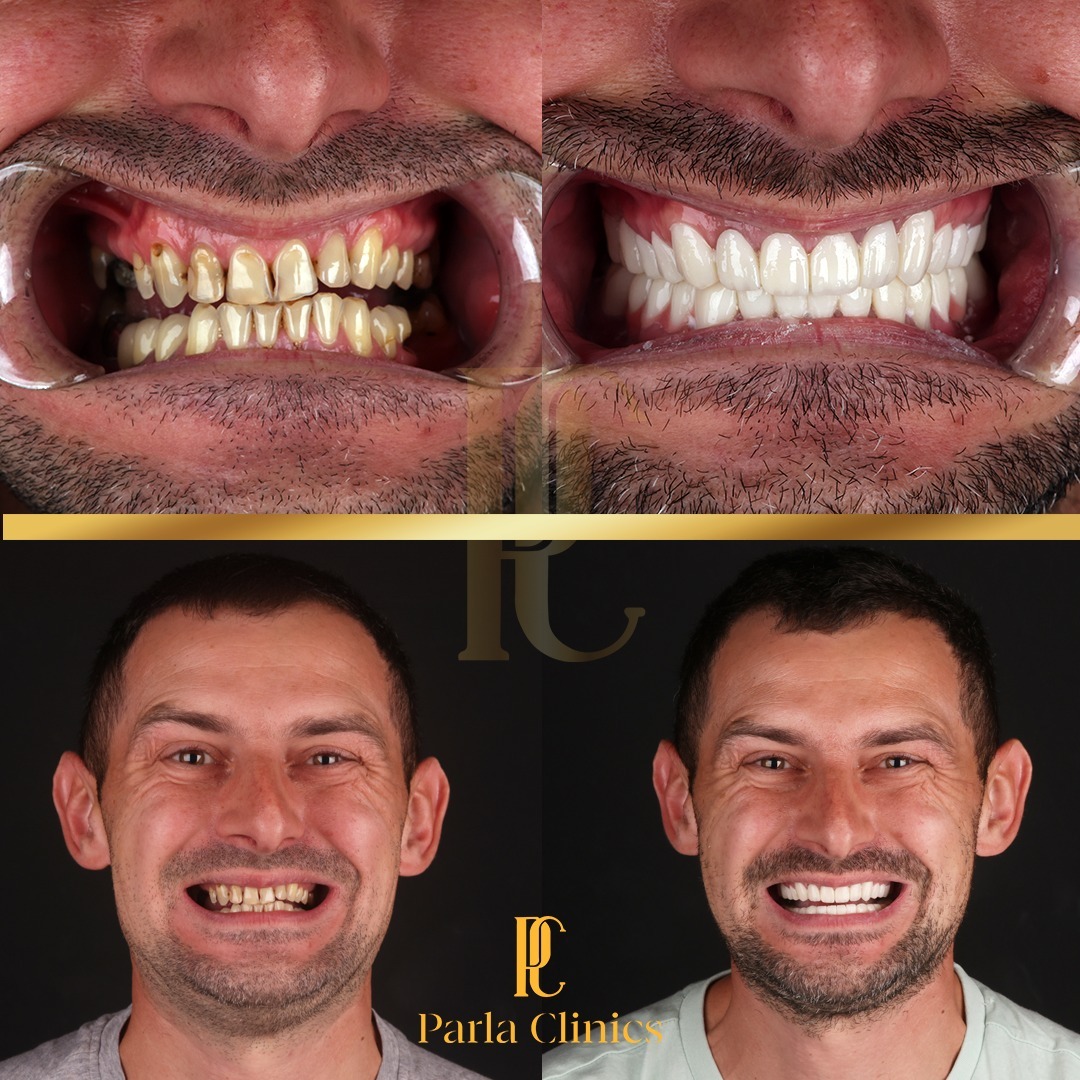Permanent Dental Implants
Complete Guide to Permanent Dental Implants
Dental implants are perhaps the single most impactful advancement in the domain of restorative dentistry as they offer a permanent solution to individuals who have lost their teeth. Unlike tooth dentures or bridges, permanent dental implants provide a more stable, durable, and natural alternative.
In this comprehensive guide, we will explore what permanent dental implants are, how they function, their benefits, and the steps involved in acquiring them. If you are thinking of this option, read on to find out why dental implants can be the right choice for you.
What Are Permanent Dental Implants?
Permanent dental implants are sophisticated titanium devices that are surgically placed into the jaw bone to serve as the artificial tooth’s root. With time, the bone integrates with the titanium implant in a process known as osseointegration. This “becoming one” process provides adequate support for a prosthetic tooth or bridge, thereby permanently addressing the issues of missing teeth.
Unlike dentures or dental bridges, which sit on top of the gums, dental implants surgically remove the root of the tooth and embed a replacement. This not only results in better gum health, but also means a much more secure and stable fit. Additionally, because the implants bond with your bone, they replicate the natural tooth structure, serving as a much better alternative for tooth replacement.

Advantages of Getting Permanent Implants
Compared to other methods of replacing teeth, permanent dental implants are relatively better for the following reasons:
- Look Better: Implants are aesthetically pleasing and feel like real teeth, providing a beautiful smile.
- Enhances Functionality: These greatly improve chewing ability so you can eat anything without any worries.
- Durability: These can last for more than one lifetime if properly maintained so in the long-term, these are great value for money.
- Bone Preservation: These ensure the maintenance of jaw bone density by acting as a stimulus for bone growth, unlike other used methods to replace teeth.
- No Affected Teeth: Adjacent teeth undergo alteration when using bridges, but Implants are self-sufficient and do not harm other teeth.
BOOK A FREE CONSULTATION
Who Is Eligible for Permanent Dental Implants?
Most adults with missing teeth can get dental implants, but they are not suitable for everyone. The following points shows who is eligible for getting permanent dental implants.
- Good Oral Health:The individual must have healthy gums and sufficient bone in the jaw to support the implant.
- Non-Smoker:The healing stage is critical towards the implants bonding with bone, smoking greatly inhibits this process.
- Healthy Enough for Surgery:The patient must be in good condition to go through surgery to get these implants.
- Commitment to Good Oral Hygiene:Taking care of the implants properly is one of the most important factors in ensuring their success in the long run.


The Process of Getting Permanent Dental Implants
Teeth replacement with implants is not a single-stage activity; rather, it is a lengthy multi-stage procedure that can take months to complete. The implants go through key stages which include the following:
-
Consultation and Evaluation
Scheduling a consultation might look like a simple point in the process, but in reality it is extremely important as it determines everything else that happens afterward, The dental health professional will normally talk about the patients medical history as well as do a full evaluation, and which can involve taking X-Rays, or even doing 3D scans, check the jaw bone heights, and looking for any other possible obstructions, and then decide the anticipated locations for the dental implants. After this thorough evaluation, they will define the treatment plan, and come up with the anticipated locations for the dental implants.
-
Surgical Placement of the Permanent Dental Implants
The second part is the surgical phase of putting the titanium implant within the jawbone. This will likely require some local anaesthetic as the procedure can be uncomfortable. For a fraction of the patients, some light sedation is given to heighten patient comfort during the implant surgery. After the implant is integrated, there is usually a waiting time of around 3-6 months to allow osseointegration to heal where the bone fuses with the implant, or integrates with it.
-
Attaching the Abutment
When osseointegration is successfully done, the next step is adding an abutment, which is used to attach the prosthetic tooth and mounts on top of the needed implant
-
Placing of the prosthetic tooth
Prosthetic teeth (dental crowns) can be affixed to the abutments after they have been integrated with the prosthetic joints. In this step, the seamless restoration is placed so its functionality and aesthetics correspond with your natural teeth. The crowns are placed following certain procedures like the All On 6 or the All On 4 method amongst others.

Recovery After Implant Surgery
The average recovery period for dental implant surgery is between a couple of months to a few months as it osseointegrates. However, each patient’s recovery will differ in scope and time estimates. You will require guidance from your doctor throughout this time, which may require restricting some foods, abstaining from smoking, and maintaining a certain level of oral cleanliness.
Cost of Permanent Dental Implants
The factors influencing the cost of permanent dental implants include the quantity of implants required, the intricacy of the work, and the region in which the dental surgery is performed. Prices differ but, for a single dental implant in Turkey, for example, they are in the range of £200 to £1000, while in the us we are talking about 2000 to 4500 per implant. This is often inclusive of the abutment and the crown. The financial fallout from dental implants might lessen due to payment plans and insurance coverage. If you want to know more, click here to see a breakdown of costs of permanent dental implants around the world
BOOK A FREE CONSULTATION
Risk and Complications
Permanent dental implants have a high success rate, but, like all surgeries, there are associated risks. These may include:
- Infection: This is always a concern for surgical procedures. Infection at the implant site has the potential to become problematic.
- Implant Failure: Integration of the implant to the bone may not always occur. This remains a rare occurrence though.
- Damage to other essential structures:Surrounding teeth, blood vessels and nerves are other areas that could unintentionally be impacted during the surgical procedure.
- Sinus complications:There is a potential heightened risk of sinus issues for upper jaw implants..

Long-Term Care and Maintenance of Dental Implants
These are some of the main advantages dental implants over dentures. In addition to ease of maintenance implants are typically more durable. Unlike dentures that require special cleaning, implants are similar to actual teeth, meaning that they can be brushed. In order to properly care for them, these steps should be followed
- Regular brushing of the implants at a minimum of twice each day.
- Daily Flossing around the implant area
- Routine consultations with the dentist to check the condition of the dental implants.

Conclusion
For individuals with missing teeth, dental implants are super convenient as they are considered a long-term solution. Their appearance, function, and the way they hold up over time are much better than dentures and bridges. While the wait may be long, the outcome is stunning. If you are thinking about getting dental implants, make sure to talk to a certified orthodontist to gather more information about the process and if it’s suitable for you.
Frequently Asked Questions
What is the success rate of permanent dental implants?
The success rate is really good, ranging from 95% to 98%. However, some things such as a person’s overall health, bone density, and how well they follow the aftercare guidelines can impact the success rate.
How long do permanent dental implants last?
With adequate care like regular cleaning and checkups, dental implants can last forever.
Does it hurt to get dental implants?
No, patients are put under local anesthesia during the procedure so there is no pain. However, there may be slight pain during recovery.
Are there other options to getting implants?
Other options include dentures, bridges, or resin bonded bridges. However, it’s a well known fact implants are the most sturdy and durable option.
Can I go back to eating normally after getting dental implants?
Yes, you can go back to eating whatever you like after the prosthetic tooth has been placed and the implant has healed.
Is it possible to get dental implants for people with osteoporosis?
Osteoporotic patients can still receive dental implants, but they may need more extensive bone grafting. We will discuss your particular case during the consultation.
Ready to restore your smile with implants? Book a Consultation Now!
Don’t let missing teeth ruin your life.
Call usor click the button above to schedule your appointment.
BOOK A FREE CONSULTATION


